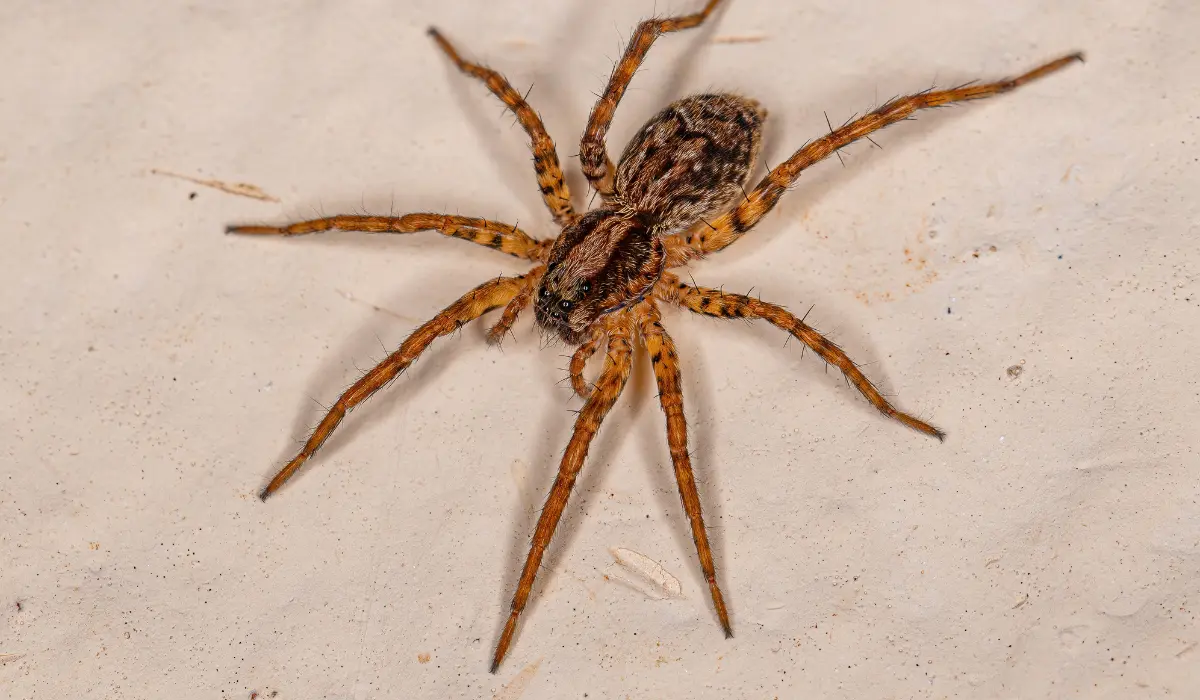
Have you ever felt a sudden, sharp pain while walking barefoot through your Louisiana home? It could be a sign of a yellow sac spider bite. This common but intriguing arachnid is known for its adaptability and presence in homes throughout the region.
Keep reading to discover their habits, habitats, and how to handle them if they become uninvited guests.
Key Takeaways
- Yellow sac spiders are small and light-colored, often making silk sacs instead of webs.
- Though their bites are usually mild, yellow sac spiders can cause discomfort if threatened or provoked.
- Sealing cracks, reducing clutter, and controlling insects can help prevent yellow sac spiders.
- Pest control experts can provide tailored solutions if yellow sac spider infestations persist.
WHAT ARE YELLOW SAC SPIDERS?
Yellow sac spiders are small but notable creatures known for their unique silk sacs and distinct colors. Found mainly in regions like Louisiana, this spider species intrigues many due to their habits and habitats.
Physical Characteristics

Yellow sac spiders typically have a light yellow or cream-colored body, although they may take on a greenish tint after feeding. Both males and females feature a dark brown cephalothorax, creating a subtle contrast against the rest of their body.
Measuring around 1/4 inch in body length, these spiders are relatively small. Despite their size, their appearance is distinctive. The contrast in color often sets them apart from other common spiders.
Behavior and Habits
Silk sacs are the hallmark of these spiders, strategically constructed as a retreat during the day. They are primarily nocturnal, exhibiting a preference for hunting rather than web-building.
As active hunters, these house spiders may wander, especially searching for prey or cooler areas. This occasionally leads to indoor sightings. Known for their somewhat defensive nature, they may bite readily when threatened or provoked.
Diet and Habitat
This type of spider primarily preys on smaller insects, using its quick reflexes to capture what it needs. Feeding time typically includes bugs and other tiny arthropods in their immediate vicinity.
Naturally adapted to North America from Europe, they often inhabit gardens and sometimes homes. Their adaptability allows them to survive indoors, especially in the corners of walls.
Common Species
Of this spider genus in North America, the two most common ones you may encounter are:
- Black-Footed Yellow Sac Spiders: Typically live outdoors in woodpiles, gardens, and under rocks. Known for creating silk sacs to protect themselves during the day.
- European Yellow Sac Spiders: Primarily indoors, in homes, basements, attics, and garages. Known for tolerating colder climates and adapting well to indoor conditions.
The distinction between Black-Footed Yellow Sac Spiders and European Yellow Sac Spiders is subtle, with variations in geographical distribution and environmental preferences.
ARE YELLOW SAC SPIDERS DANGEROUS?
Yellow sac spiders can bite humans, particularly if threatened or provoked. These spiders are usually more active at night when most bites occur. You may encounter them indoors, especially during cooler months.
If bitten by a yellow sac spider, you might experience swelling and redness at the bite site. Initially, there may be a burning sensation, followed by itching. Some individuals might also feel mild muscle cramps. These symptoms are usually mild and subside in a few days.
Over-the-counter pain relief creams may be used. Applying ice can also help ease discomfort. Most bites don’t need medical attention, but if symptoms worsen or cause significant concern, it might be wise to seek professional advice.
YELLOW SAC SPIDERS VS. OTHER VENOMOUS SPIDERS
Yellow sac spiders have a bad reputation for their bites in Louisiana. They are often compared to other venomous spiders. While not as dangerous as the brown recluse bites, they can still cause discomfort.
Here’s a quick comparison to guide you in telling them apart:
| Spider Species | Notable Features |
|---|---|
Yellow Sac Spiders  | Cream-colored or light yellow body, builds silk sacs instead of webs |
Brown Recluse Spiders  | Violin-shaped marking on their back, prefers dark, undisturbed areas like basements or closets |
Black Widow Spiders  | Shiny black body with a red hourglass marking on the underside of the abdomen |
Brown Widow Spiders  | Brown or tan body with an orange or yellow hourglass marking |
Wolf Spiders  | Large, hairy body with excellent eyesight, do not spin webs but hunt prey on the ground |
HOW TO SPIDER-PROOF YOUR HOME
Home maintenance acts as a deterrent for yellow sac spiders. Consider these steps to prevent these arachnids from invading your home:
- Use caulk for cracks in walls and foundations.
- Clean basements, garages, and attics regularly.
- Limit small insects by using repellents to reduce their food supply.
- Consider pest control or exterminators if spider infestations persist.
Light management also plays a part. Outdoor lights attract insects, which in turn lure spiders indoors. By reducing unnecessary lighting, you can discourage spider invasions.
SHOULD YOU BE CONCERNED ABOUT YELLOW SAC SPIDERS?
Not everyone is comfortable sharing their living space with spiders. Managing their population with professionals can help prevent future issues.
Whether you’re in Baton Rouge or New Orleans, seeking expert help should be easy. For immediate intervention for a severe infestation, let Lajaunie’s spider control specialists tailor a solution that’s right for your home.
For more information about our services, visit our service page.
Related: How to Get Rid of Yellow Sac Spiders
Related: Worth the Worry? What to Know About Yellow Sac Spider Bites